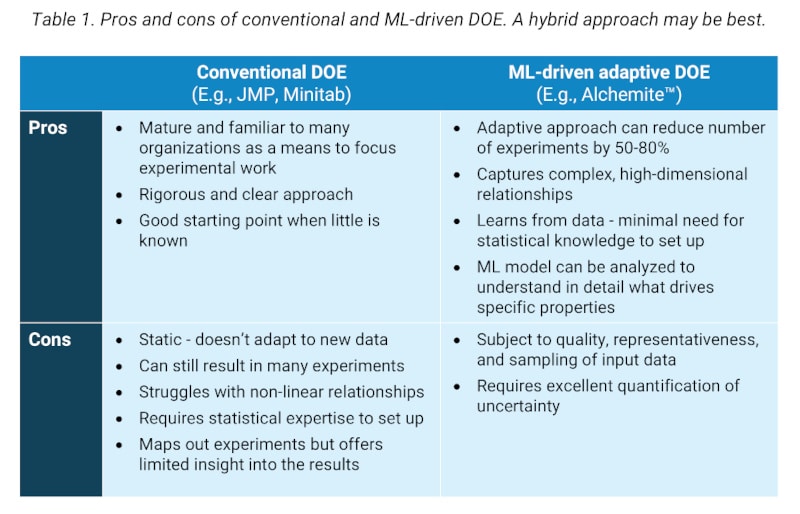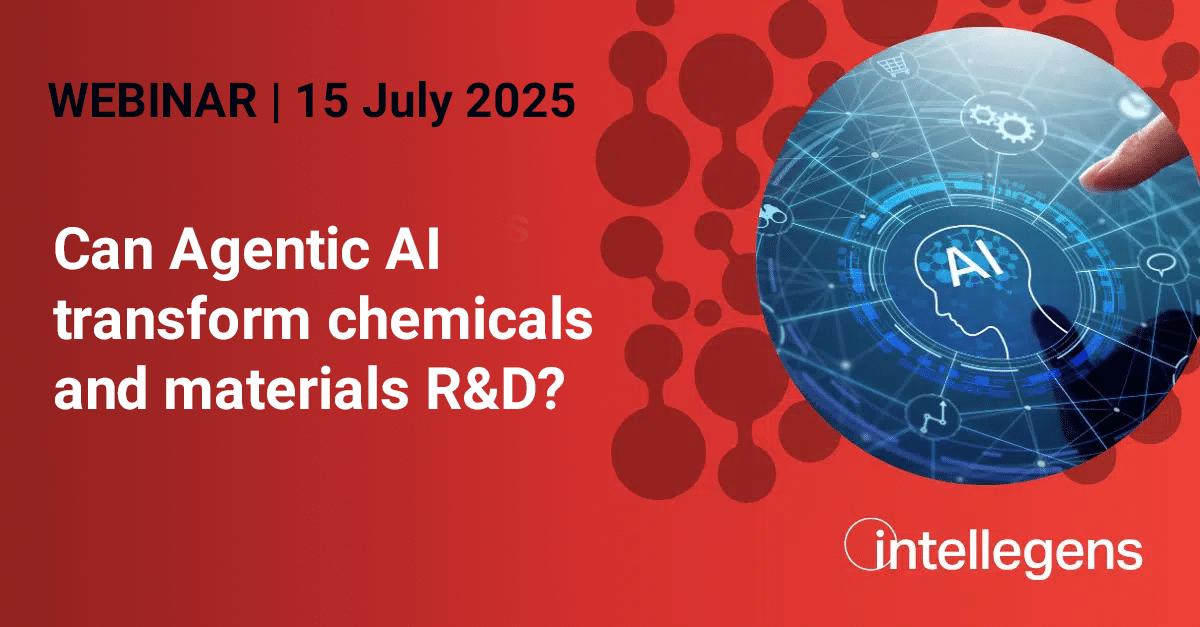How ML complements DOE methods such as JMP, Minitab, MODDE, and Design-Expert
“I’m a JMP user – why should I consider machine learning software for DOE?”
It’s question we hear a lot at Intellegens. In this white paper, we explore how machine learning adds value to Design of Experiments and why conventional DOE and machine learning should not be seen as competing methods, but as complementary tools.

Executive Summary
R&D teams can achieve faster innovation and better outcomes by combining the rigour of Design of Experiments (DOE) with the agility of machine learning (ML). While conventional DOE ensures balanced coverage of the experimental space when data is scarce, ML builds on those results and any existing data to focus experiments on high‑value targets in real time.
Key benefits of an ML‑driven experimental design strategy include:
- Reduced experiment through adaptive selection of the most informative tests.
- Shortened development cycles by continuously updating recommendations as new data arrive.
- Maximized ROI on existing tools and data by importing DOE results and historical experiments into ML models.
Together, DOE and ML form a hybrid approach that lowers cost, accelerates decision‑making, and drives more efficient discovery.
Sample content


